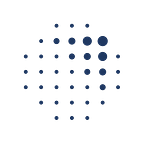Papers and patents are becoming less disruptive
While the volume of patents and papers has surged over the past decades, their disruptiveness is on the decline. Is it time for new innovation metrics?
What happened?
Analyzing 45 Million scientific papers and 3.9 Million patents between 1945–2010, US researchers found that while the global volume of patents and scientific papers increased exponentially over the past six decades, the nominal impact these publications have on innovative activity has steadily been slowing across scientific disciplines and technology categories.
To capture how much a patent disrupts a field, the researchers analyzed the “CD Index,” a metric ranging from 1 for patents that push science and technology into a new direction, to -1 for non-disruptive patents that contribute incrementally to prior knowledge (see Figure 1). Disruptive patents and papers, the authors reason, would lead future patents and papers to be less likely to cite prior references, and instead would cite the new patent or paper. Their analysis revealed a strong negative trend in the proportion of patents and publications that send research on a new path.
So what?
Patents and scientific papers are commonly used as measures of innovativeness. This analysis indicates that the number of patents and papers that companies, research institutes, and countries put out is a poor indicator of their ability to produce disruptive innovations.
The study’s conclusion confirms insights from our expert Think Tank on the declining importance of patents in the new economy, as reported in the 2022 TSG Global Innovation Survey. While patents and scientific papers are important factors in innovation activity, numerous technology domains rely little on intellectual property protections (e.g., patenting Machine Learning algorithms is nearly irrelevant.) As the initiator of the leading global innovation benchmark for listed equities, The Singularity Group tracks innovation revenues using an expert-led research and investment approach. Doing so allows us to identify applied technological advances in different technological domains as they disrupt and create real value across industries.
About The Singularity Group
The Singularity Group (TSG) makes applied innovation investable in listed equities. TSG is the initiator of the Singularity Index™ (Bloomberg ticker: NQ2045), a global, all-sector benchmark and gold standard for applied innovation. The Singularity Strategies include The Singularity Fund (UCITS Lux) and the Singularity Small&Mid (UBS AMC). The Swiss investment boutique works closely with the Singularity Think Tank, a network of entrepreneurs and academics with deep insights into innovation value chains. Their input forms the foundation of TSG’s proprietary innovation scoring system that quantifies the engagement of companies within a set of curated Singularity Sectors worldwide across all market capitalizations and industries. The Singularity Score defines how much value listed companies are generating through applied innovation.
For more information on how our Think Tank’s insights fuel our strategy, please visit www.singularity-group.com.
References: Park, M., Leahey, E. & Funk, R. J. Nature 613, 138–144 (2023).
